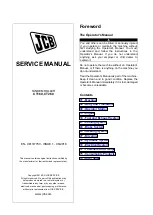
DTX-PCxxS Patch Cord Test Adapters
Users Manual
8
Fault Information for Long Patch Cords
For 20 m patch cord limits, the tester's automatic diagnostics may help you determine
why a patch cord failed. After an Autotest that failed, press
J
Fault Info to see
information about the failure.
Note
The tester's automatic diagnostics do not usually give
complete fault information for patch cords shorter than
20 m.
Mechanical Stress Tests for Patch Cords
Every patch cord design should be evaluated for changes in performance
−
particularly
return loss performance
−
under mechanical stress. Refer to the TIA or ISO/IEC standards
for details on stress tests.
Since it is not practical to perform the stress tests on every patch cord produced, you can
test samples of production patch cords to ensure quality. The sample size depends on
the desired quality level. Alternately, you can use the stress tests to determine the
possible shift in performance, then apply the shift to worst-case margins to ensure that
patch cords meet specifications under worst-case conditions. You can apply the shift as
you test, or you can use LinkWare software to upload test results to a PC for evaluation.
Replacing the Jacks in the Adapters
The RJ45 jacks in the DTX-PCxxS adapters are typically good for 5000 insertions when
used continuously.
When used non-continuously, the lifetime may be reduced to 750 insertions. After 750
insertions, the gold plating that prevents oxidation on the contacts may be worn away;
however, continuous use wipes off the oxidation and extends the life of the contacts.
W
Caution
Testing patch cords that have poorly crimped plugs may
reduce the life of the patch cord adapter's jacks or make
them unusable.
When to Replace the Jacks
You should replace the jacks when any of the following occur:
•
Margins for patch cord tests begin to shrink.
•
Patch cord tests, particularly wire map or return loss tests, begin to produce
intermittent and/or inconsistent results.
•
The jacks have been used for more than 5000 insertions.




































